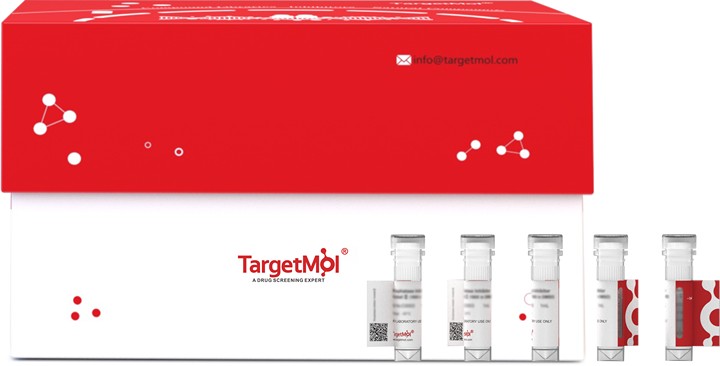购物车
- 全部删除
 您的购物车当前为空
您的购物车当前为空

CSF1R Protein, Feline, Recombinant (His & SUMO) is expressed in E. coli expression system with N-6xHis-SUMO tag. The predicted molecular weight is 70.8 kDa and the accession number is P13369.

| 规格 | 价格 | 库存 | 数量 |
|---|---|---|---|
| 20 μg | ¥ 2,290 | 20日内发货 | |
| 100 μg | ¥ 4,750 | 20日内发货 | |
| 1 mg | ¥ 16,000 | 20日内发货 |
| 生物活性 | Activity has not been tested. It is theoretically active, but we cannot guarantee it. If you require protein activity, we recommend choosing the eukaryotic expression version first. |
| 产品描述 | CSF1R Protein, Feline, Recombinant (His & SUMO) is expressed in E. coli expression system with N-6xHis-SUMO tag. The predicted molecular weight is 70.8 kDa and the accession number is P13369. |
| 种属 | Feline |
| 表达系统 | E. coli |
| 标签 | N-6xHis-SUMO |
| 蛋白编号 | P13369 |
| 别名 | Proto-oncogene c-Fms,M-CSF-R,Macrophage colony-stimulating factor 1 receptor,FMS,CSF-1-R,CSF-1R,CSF1R,CSF-1 receptor,CD115 |
| 氨基酸序列 | VPVIQPSGPELVVEPGTTVTLRCVGNGSVEWDGPISPHWNLDLDPPSSILTTNNATFQNTGTYHCTEPGNPQGGNATIHLYVKDPARPWKVLAQEVTVLEGQDALLPCLLTDPALEAGVSLVRVRGRPVLRQTNYSFSPWHGFTIHKAKFIENHVYQCSARVDGRTVTSMGIWLKVQKDISGPATLTLEPAELVRIQGEAAQIVCSASNIDVNFDVSLRHGDTKLTISQQSDFHDNRYQKVLTLNLDHVSFQDAGNYSCTATNAWGNHSASMVFRVVESAYLNLTSEQSLLQEVTVGEKVDLQVKVEAYPGLESFNWTYLGPFSDYQDKLDFVTIKDTYRYTSTLSLPRLKRSEAGRYSFLARNAGGQNALTFELTLRYPPEVRVTMTLINGSDTLLCEASGYPQPSVTWVQCRSHTDRCDESAGLVLEDSHSEVLSQVPFHEVIVHSLLAIGTLEHNRTYECRAFNSVGNSSQTFWPISIGAHTQLPDELLFTP |
| 蛋白构建 | 20-514 |
| 蛋白纯度 | > 90% as determined by SDS-PAGE. |
| 分子量 | 70.8 kDa (predicted) |
| 内毒素 | < 1.0 EU/μg of the protein as determined by the LAL method. |
| 缓冲液 | Tris-based buffer, 50% glycerol |
| 复溶方法 | A Certificate of Analysis (CoA) containing reconstitution instructions is included with the products. Please refer to the CoA for detailed information. |
| 存储 | Lyophilized powders can be stably stored for over 12 months, while liquid products can be stored for 6-12 months at -80°C. For reconstituted protein solutions, the solution can be stored at -20°C to -80°C for at least 3 months. Please avoid multiple freeze-thaw cycles and store products in aliquots. |
| 运输方式 | In general, Lyophilized powders are shipping with blue ice. Solutions are shipping with dry ice. |
| 研究背景 | Tyrosine-protein kinase that acts as cell-surface receptor for CSF1 and IL34 and plays an essential role in the regulation of survival, proliferation and differentiation of hematopoietic precursor cells, especially mononuclear phagocytes, such as macrophages and monocytes. Promotes the release of proinflammatory chemokines in response to IL34 and CSF1, and thereby plays an important role in innate immunity and in inflammatory processes. Plays an important role in the regulation of osteoclast proliferation and differentiation, the regulation of bone resorption, and is required for normal bone and tooth development. Required for normal male and female fertility, and for normal development of milk ducts and acinar structures in the mammary gland during pregnancy. Promotes reorganization of the actin cytoskeleton, regulates formation of membrane ruffles, cell adhesion and cell migration, and promotes cancer cell invasion. Activates several signaling pathways in response to ligand binding, including the ERK1/2 and the JNK pathway. Phosphorylates PIK3R1, PLCG2, GRB2, SLA2 and CBL. Activation of PLCG2 leads to the production of the cellular signaling molecules diacylglycerol and inositol 1,4,5-trisphosphate, that then lead to the activation of protein kinase C family members, especially PRKCD. Phosphorylation of PIK3R1, the regulatory subunit of phosphatidylinositol 3-kinase, leads to activation of the AKT1 signaling pathway. Activated CSF1R also mediates activation of the MAP kinases MAPK1/ERK2 and/or MAPK3/ERK1, and of the SRC family kinases SRC, FYN and YES1. Activated CSF1R transmits signals both via proteins that directly interact with phosphorylated tyrosine residues in its intracellular domain, or via adapter proteins, such as GRB2. Promotes activation of STAT family members STAT3, STAT5A and/or STAT5B. Promotes tyrosine phosphorylation of SHC1 and INPP5D/SHIP-1. Receptor signaling is down-regulated by protein phosphatases, such as INPP5D/SHIP-1, that dephosphorylate the receptor and its downstream effectors, and by rapid internalization of the activated receptor. In the central nervous system, may play a role in the development of microglia macrophages. |